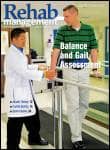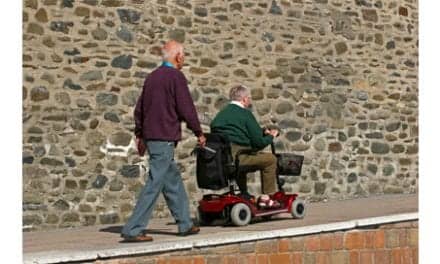Are you ready for what’s coming?

One of the messages delivered in the 2007 film, No Country For Old Men, is that we should be prepared for change because, as the film’s grizzled sheriff observes, “You can’t stop what’s comin’.” This is my first issue as editor of Rehab Management, which sort of makes me the new sheriff in town and makes this a good time to talk about possibilities that still lay ahead in 2011. One phenomenon I predict will be worth watching is the growth of quick response (QR) codes. How we think about and use the smallish boxes, populated by what appears to be a scrambled checkerboard, will add speed and ease to the way we work, shop and gather information.
For the physical rehabilitation community, the payout from using QR codes may look a lot like the windfalls enjoyed by medical facilities that have incorporated bar code scanners to reduce transcribing errors and raise patient safety levels. The codes, which essentially can be created for free, are able to communicate vital data for applications ranging from patient registration and the provision of care to information that can help streamline product and supply logistics. The technology has already caught the fancy of Walgreens. The company reports that among its customers who use the store’s mobile applications to order refills, more than half use the company’s “Refill by Scan” feature.
Ease of use is a big part of QR codes’ appeal. As consumers we can use QR codes for a range of applications that includes making purchases, getting driving directions or acting as an airline boarding pass. Taking advantage of this convenience requires only a few simple steps. First, a user downloads a smart phone app (many are free) that enables the phone’s camera lens to function as a scanner. After the app is downloaded the user positions the phone over the QR code and makes a scan. Once the scan is complete the user may be directed automatically to a web URL or have the option to work with data from the scan directly on the smart phone.
So, is this what’s coming? An increase of 4549% in QR scanning traffic in North America from Q1> 2010 to Q1 2011 suggests it is. This figure lunges out of a report issued by Mobio Identity Systems and reported May 14 on USATODAY.com. Compiled from data taken from the company’s servers, the report reveals that most people use the scans to receive information about a product or service. The document also shows payments made from mobile devices using the codes grew 256% from Q1 2010 to Q1 2011, and that nearly half of the people who make QR code scans are in the age 35 to age 54 demographic.
The old UPC bar codes that took hold in the 1970s are no longer up to the task of our mobile-enabled lifestyles. The two-dimensional architecture of QR codes contains exponentially more information than their predecessors, and we are able to interact with that data in real time. QR codes offer business information, execute purchases and can get us on board an airliner with greater convenience than anything that has come before.
—Frank Long
()





